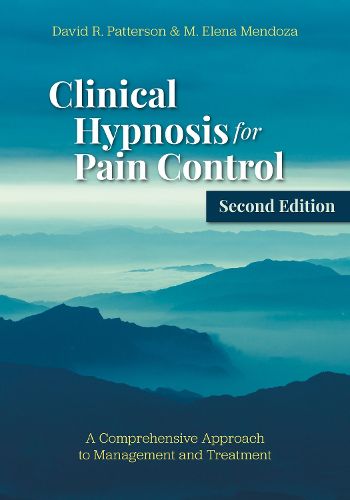Readings Newsletter
Become a Readings Member to make your shopping experience even easier.
Sign in or sign up for free!
You’re not far away from qualifying for FREE standard shipping within Australia
You’ve qualified for FREE standard shipping within Australia
The cart is loading…






This comprehensive guide shows how integrating hypnosis with psychotherapy and mindful meditation can help clinicians treat patients who suffer from chronic and acute pain.
David R. Patterson and M. Elena Mendoza present hypnotic analgesia as a viable alternative to psychopharmacological interventions for pain resulting from physical injuries, nerve damage, surgery, neurological problems, and other sources. They review research elucidating the neurophysiological and biopsychosocial roots of pain and provide clinical strategies that can be applied in a variety of settings.
Patterson and Mendoza adopt a nuanced treatment model that deemphasizes pain reduction, which can be counterproductive, and focuses instead on adaptive pain management through cognitive restructuring.
This second edition includes updated research findings and practice guidelines, including technological innovations like virtual reality hypnosis, and a new chapter on mindful meditation. The authors also add a step-by-step case example that walks readers through an integrative, eight-session process and brings the techniques described in this volume to life.
$9.00 standard shipping within Australia
FREE standard shipping within Australia for orders over $100.00
Express & International shipping calculated at checkout
This comprehensive guide shows how integrating hypnosis with psychotherapy and mindful meditation can help clinicians treat patients who suffer from chronic and acute pain.
David R. Patterson and M. Elena Mendoza present hypnotic analgesia as a viable alternative to psychopharmacological interventions for pain resulting from physical injuries, nerve damage, surgery, neurological problems, and other sources. They review research elucidating the neurophysiological and biopsychosocial roots of pain and provide clinical strategies that can be applied in a variety of settings.
Patterson and Mendoza adopt a nuanced treatment model that deemphasizes pain reduction, which can be counterproductive, and focuses instead on adaptive pain management through cognitive restructuring.
This second edition includes updated research findings and practice guidelines, including technological innovations like virtual reality hypnosis, and a new chapter on mindful meditation. The authors also add a step-by-step case example that walks readers through an integrative, eight-session process and brings the techniques described in this volume to life.